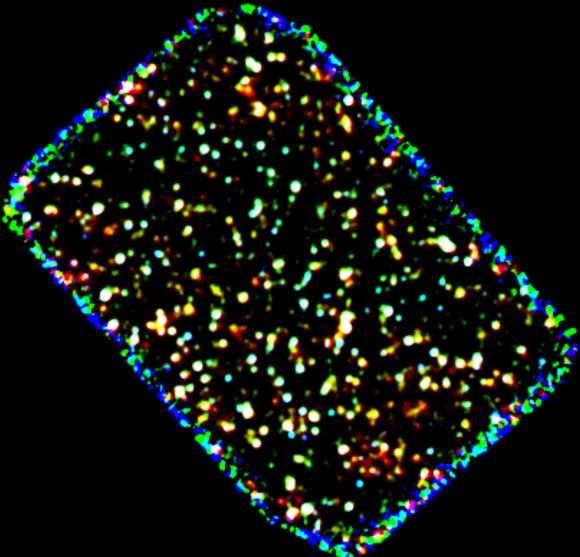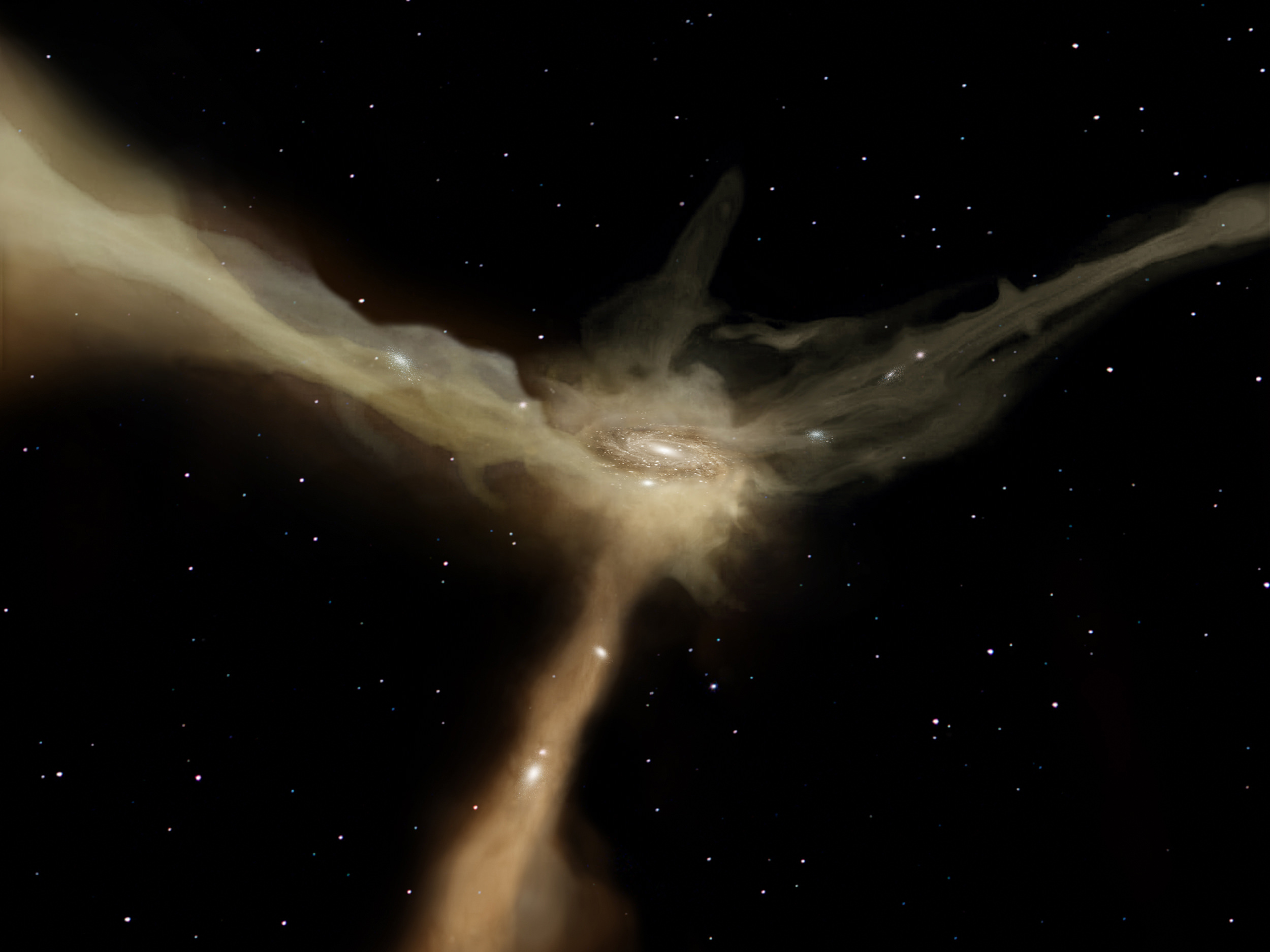[/caption]
Was the universe a kinder, gentler place in the past that we have thought? The Herschel space observatory has looked back across time with its infrared eyes and has seen that galaxy collisions played only a minor role in triggering star births in the past, even though today the birth of stars always seem to be generated by galaxies crashing into each other. So what was the fuel for star formation in the past?
Simple. Gas.
The more gas a galaxy contained, the more stars were born.
Scientists say this finding overturns a long-held assumption and paints a nobler picture of how galaxies evolve.
Astronomers have known that the rate of star formation peaked in the early Universe, about 10 billion years ago. Back then, some galaxies were forming stars ten or even a hundred times more vigorously than is happening in our Galaxy today.
In the nearby, present-day Universe, such high birth rates are very rare and always seem to be triggered by galaxies colliding with each other. So, astronomers had assumed that this was true throughout history.

But Herschel’s observations of two patches of sky show a different story.
Looking at these regions of the sky, each about a third of the size of the full Moon, Herschel has seen more than a thousand galaxies at a variety of distances from the Earth, spanning 80% of the age of the cosmos.
In analyzing the Herschel data, David Elbaz, from CEA Saclay in France, and his team found that even though some galaxies in the past were creating stars at incredible rates, galaxy collisions played only a minor role in triggering star births. The astronomers were able to compare the amount of infrared light released at different wavelengths by these galaxies, the team has shown that the star birth rate depends on the quantity of gas they contain, not whether they are colliding.
They say these observations are unique because Herschel can study a wide range of infrared light and reveal a more complete picture of star birth than ever seen before.
However, their work compliments other recent studies from data from the Spitzer Space Telescope and the Very Large Telescope which found ancient galaxies fed on gas,not collisions
“It’s only in those galaxies that do not already have a lot of gas that collisions are needed to provide the gas and trigger high rates of star formation,” said Elbaz.
Today’s galaxies have used up most of their gaseous raw material after forming stars for more than 10 billion years, so they do rely on collisions to jump-start star formation, but in the past galaxies grew slowly and gently from the gas that they attracted from their surroundings.
This study was part of the GOODS observations with Herschel, the Great Observatories Origins Deep Survey.
Read the team’s paper in Astronomy & Astrophysics: GOODS–Herschel: an infrared main sequence for star-forming galaxies’ by D. Elbaz et al.
Source: ESA


See comment as to advance thinking here in the motivations of the universe? You can talk about spherical cows if you like?;)
String theory may hold answers about quark-gluon plasma-http://www.symmetrymagazine.org/breaking/2011/06/15/string-theory-may-hold-answers-about-quark-gluon-plasma/
While you may talk about cosmology, people have been pushing back the perspectives on science of the universe. String theory is doing that. Gas scientifically is not the answer, and supernovas should be looked at as well as the collapses that take place.
All but the last sentence seems to be about anything but early star formation as discussed here, and only a fragment at that:
What does that even mean? Gas clouds is a possible scientific hypothesis, and the authors here claims it is the likeliest scientific answer.
Maybe you are discussing something else entirely though.
Early structure formation and IR; an excellent area for JWST, right? … oops.
The result, if it stands up, makes sense. Somewhere you will have to make the first galaxies form stars anyway.